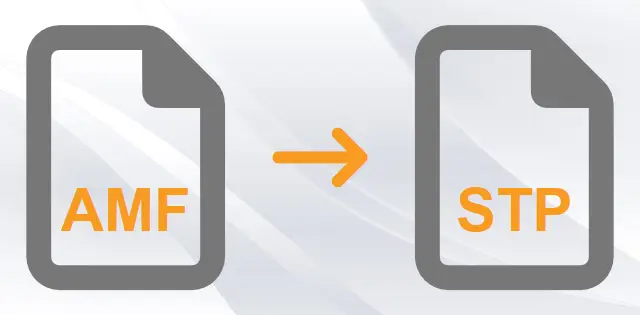
AMF to STEP Conversion
We offer a list of valuable resources, featuring comprehensive guides and expert advice for converting AMF files to STEP format using our converters. Dive in now to make your AMF files conversion process smoother later.
- Automesher Desktop Application for Windows to Convert 3D File Formats
- Convert STEP File to Different Schema Version
- Convert SketchUp SKP Models with Component Instances to STEP
- How to Convert Rhino 3DM to STEP File Format
- Convert Solid Meshes to Faceted BREP in STEP File
- Convert STL to STEP File with Autoconverter
AMF vs. STEP Comparison
| Property | AMF | STEP |
|---|---|---|
| Extensions | .amf | .stp, .step |
| Name | Additive Manufacturing File | STandardized Exchange of Product |
| Versions |
|
|
| Textures | ||
| Colors | ||
| Geometry components |
Additive Manufacturing File
A file format that is used for 3D printing and additive manufacturing. It is a new standard that aims to improve the quality and efficiency of the 3D printing process. Here are some of the key features and benefits of AMF:
- AMF File Features: One of the main features of the AMF file format is that it supports color, materials, and texture images. This means that the 3D printed object can have more realistic and detailed appearance. Another feature of the AMF file format is that it allows the reuse of geometry component instances. This means that the same part of the 3D design can be replicated multiple times, without increasing the file size. This can save time and resources in the 3D printing process.
- AMF File Compression: Another advantage of the AMF file format is that it can be compressed using the ZIP compression algorithm. This can reduce the file size significantly, making it easier to transfer and store. The compression does not affect the quality or accuracy of the 3D design, as the AMF file format preserves the original data.
- AMF File Converters: Autoconverter and Automesher Application can only import and convert AMF files to other 3D formats, such as 3MF, STL, SKP, OBJ, DAE, and many others. We use the open asset import library, which is a cross-platform library that supports many 3D file formats. By using this library, we can ensure the compatibility and functionality of the AMF files.
STandardized Exchange of Product File
A file format used for the exchange of 3D data across various computer systems, including CAD, CAM, and CAE, in a standardized format. Some of the benefits and features of STEP files are:
- Compatibility: STEP is widely supported by many software applications and platforms, making it easy to share and collaborate on 3D models across different domains and industries.
- Accuracy: STEP preserves the exact shape and dimensions of 3D models, unlike some other mesh formats (SKP, OBJ, or STL) that may introduce errors or distortions during conversion.
- STEP Files Converter: STEP files can be very large, especially when they contain complex or high-resolution 3D models. One way to reduce the file size is to use Autoconverter software, which can utilize the faceted BREP representation, potentially saving up to one-third of the file size.
- Materials: STEP file format supports colors per assembly. However, it lacks an alpha component. This means that any transparency effects applied to 3D models will not be visible or preserved in the STEP files.